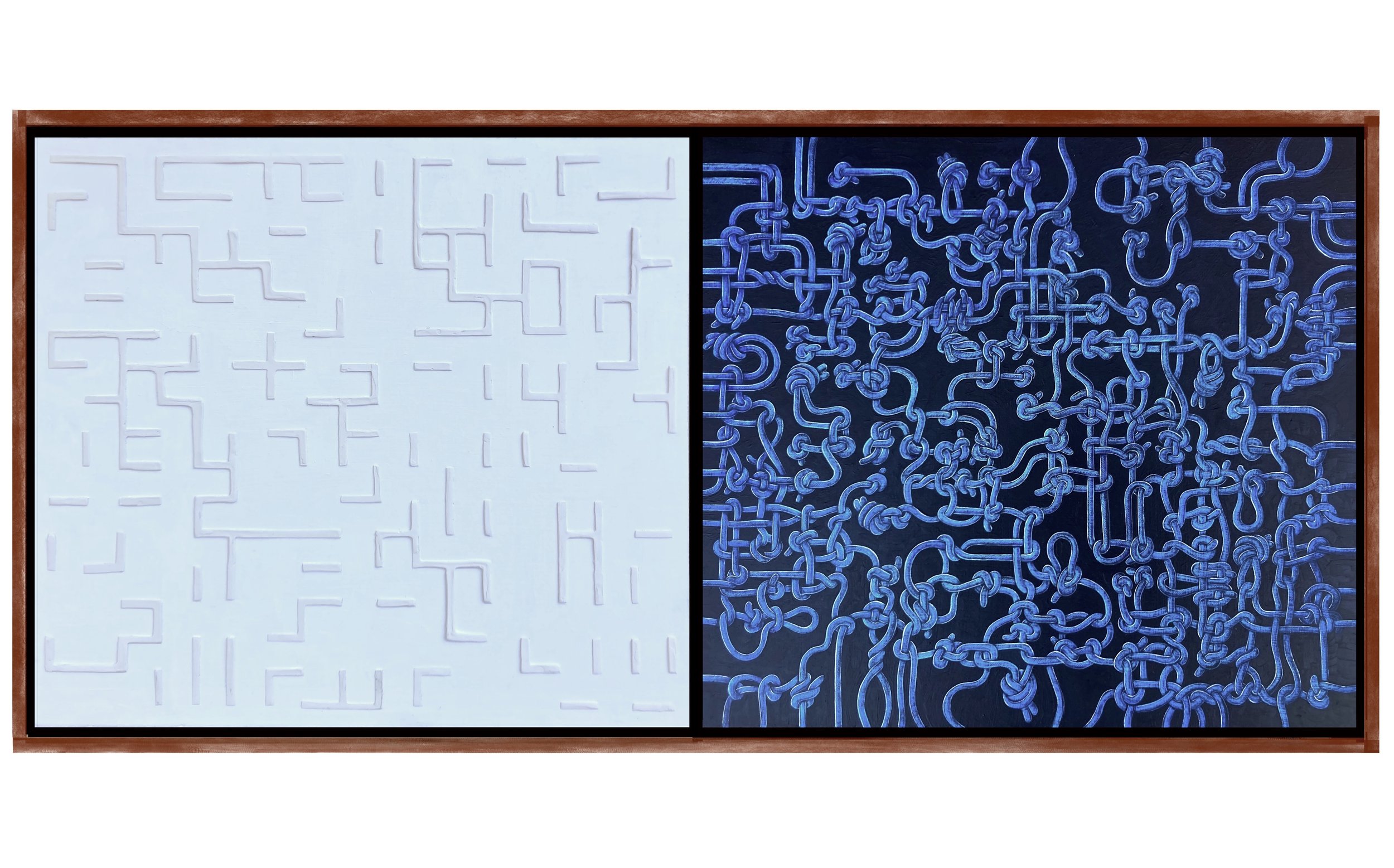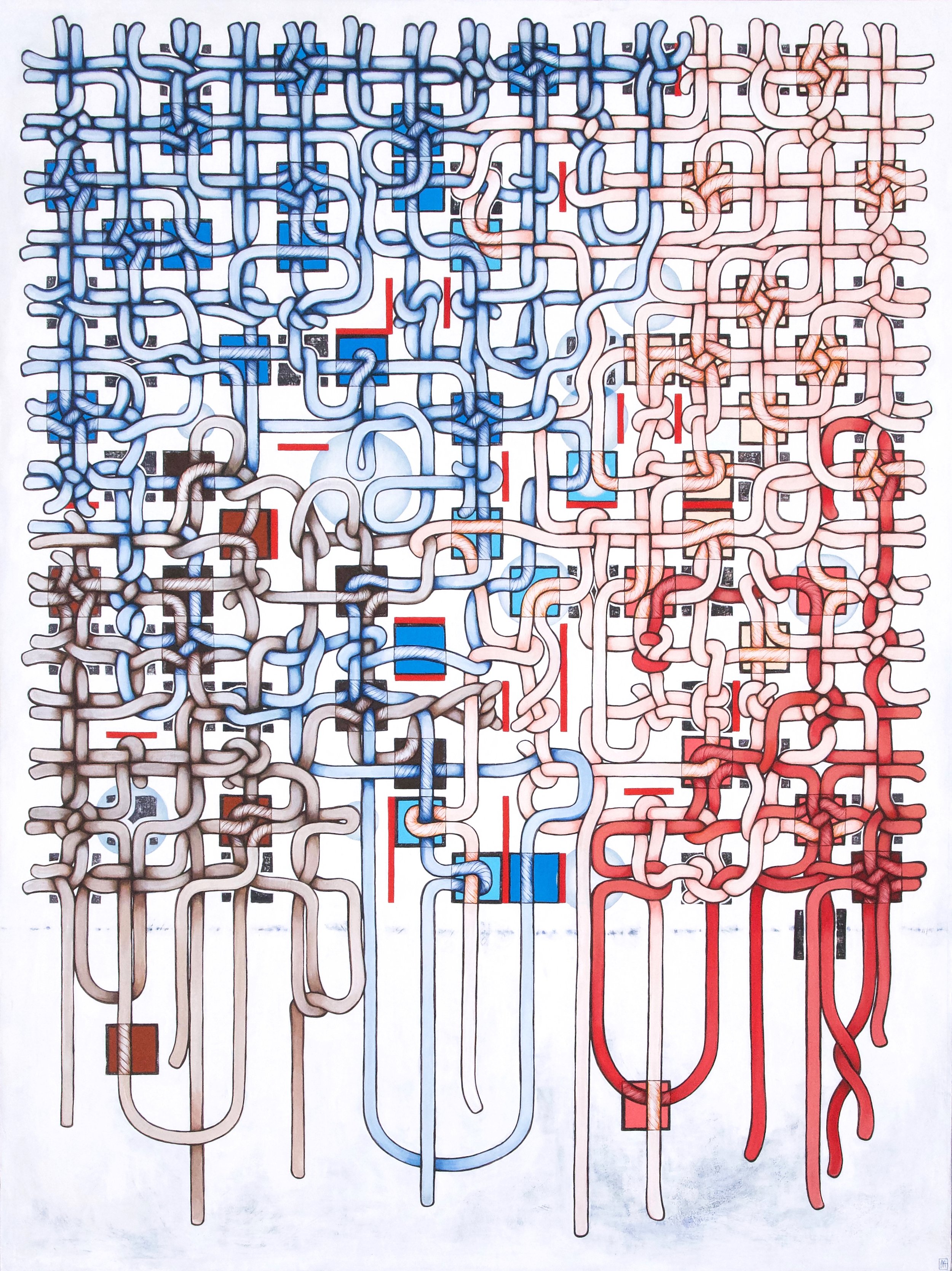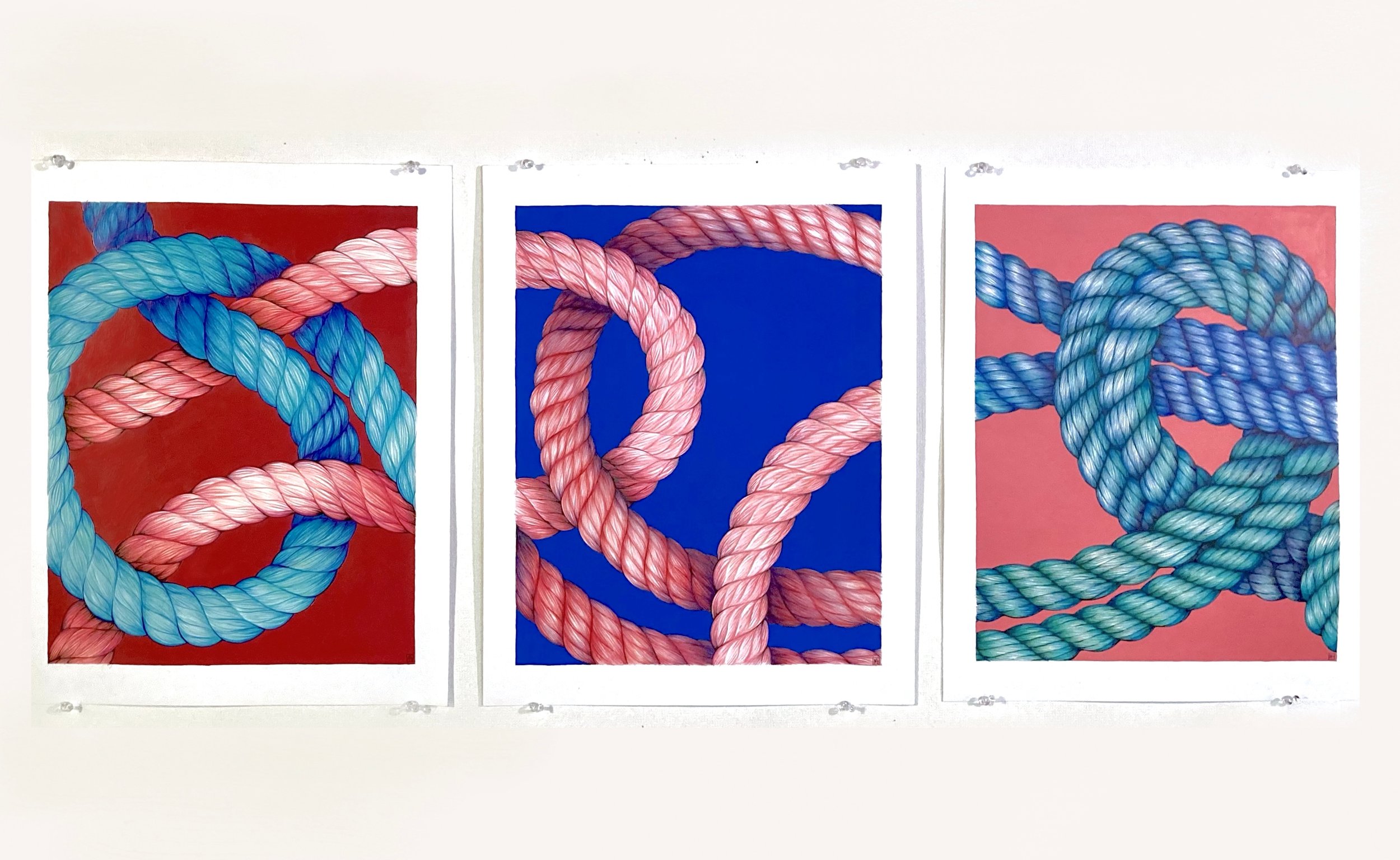DVAA Member since 2021
Morgan Thomas Shankweiler
Artist Website:
www.morganthomasshankweiler.com
About:
Morgan Thomas Shankweiler splits her studio time between the Philadelphia suburbs and the coast of Maine. She graduated with sociology and studio art majors from Williams College (Massachusetts) and studied Mughal miniature painting with Ajay Sharma in Jaipur, India. Her background in sociology informs her work, which is a study in time, memory, community, chance and the commonalities of human experience. Shankweiler’s award-winning work has been featured in the 2020 online archive of AI39, online through MuralArts Philadelphia and ArtsBenicia, has been shown in galleries in Boston, New York, New Jersey, Indianapolis and Philadelphia and she has been honored with residencies at SVA and Penland School of Craft. Her current practice focuses on the meditative and aleatoric creation of intricate rope and knot paintings and drawings. These works examine relationships, social systems and community networks through metaphorical still-life and mathematical abstraction.
Artist Statement:
In response to isolation and limited connection through digital means, my recent work has a sociological focus on community and the small, common connections between humans that exist only when we interact with each other in analog. Simultaneously, I have found myself drawn to a meditative mark-making practice of drawing ropes and a playful practice of experimenting with the connection of rope and knot segments in two-dimensional ‘puzzles'. The various ‘puzzles’ are engaged through aleatoric games that follow prescribed rules. The prescribed rules of the games can be random, mathematical, metaphorical, or fact-based (often drawn from statistics or sociological theory). The results of these games and puzzles become the basis for larger works using graphite, ink, oil pastel, acrylic paint and plaster on paper, wood panel, or canvas.
Form and mark-making meet in the work. The ropes are lines themselves but also have a dimensionality built from repetitive texture-building and rule-following. Physically, ropes are bound by natural laws, but on canvas, these laws can be challenged, and the ropes can take on any form.
Ropes are imbued with meanings of their own; they are a tool for security and safety, they are a tool for holding something down against its will, they might bind, they might lift, and when connected they take new form and tension through their interaction; safety nets, networks, internets, a metaphorical fabric of society. Ropes can be unions, but they can also enforce boundaries. Knots can secure or be an obstacle to untangle. The line-work of the individual threads in each cord, the cords twisting or weaving to make a rope, the rope looping with another, knotting, tying, to make a form or a net, compounds a physicality to the image and the rope becomes more than itself. The drawings and paintings are not just still-life, but a map of human connectivity; hands holding, sustained eye contact, a casual conversation about the weather, joined protest, embrace. The nets become a community, each knot or loop indicating a human connection that holds a 'net'work of people together. It is the humanity of these connections and the tapestry created through deliberate mark-making that draw me to this work.
Most recently, I am interested in ways in which I can employ the puzzles and games I have created not just as catalyst for a final product, but as part of the final product itself. Rather than having a fixed piece, I am interested in how the final works might be manipulated by the viewer so that the metaphorical ‘net’works evolve with active external community influence or visually represent a social system known to them in their daily lives. I am interested in exploring three things where they meet: the visual language surrounding the creation of the mathematical puzzle, the aesthetic results of the puzzle as "played" on a surface, and the interactive strategies employed by a community in the manipulation of the work.





